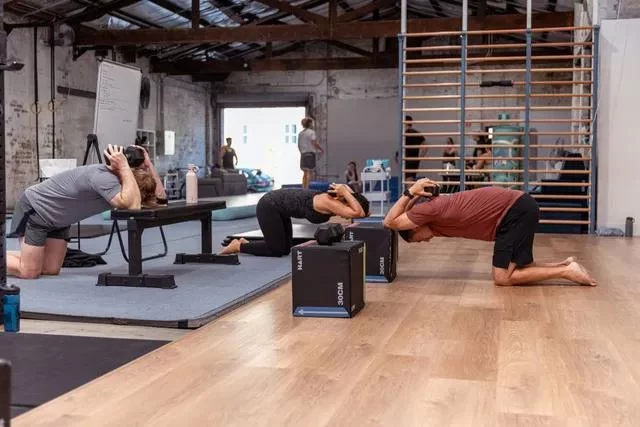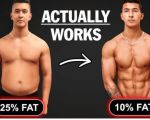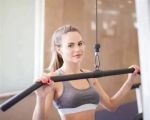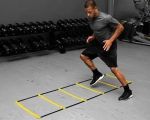
Choosing the Best Gym for Flexibility Training: My Personal Experience
When I first started my journey into flexibility training, I never imagined how much it would impact my daily life. As someone who had always been relatively stiff, the idea of stretching and improving my flexibility seemed daunting. However, after spending time researching and testing different gyms, I realized that choosing the right gym for flexibility training is crucial to achieving my goals. If you’re looking to improve your flexibility and are wondering which gym is best for you, I’d like to share what I’ve learned through my experience.
1. The Importance of Flexibility Training
Flexibility training is more than just about touching your toes or performing a perfect split. It is essential for improving range of motion, reducing the risk of injuries, and promoting overall physical health. For athletes, it can enhance performance by allowing greater movement efficiency. For non-athletes, flexibility training can help alleviate back pain, improve posture, and even help with stress relief. The benefits are endless, which is why I decided to embark on this training journey.
2. What to Look for in a Gym for Flexibility Training
When I began looking for a gym that could help me improve my flexibility, I quickly realized that not all gyms are created equal when it comes to stretching and flexibility exercises. Here are the key factors that I looked for in a gym:
- Specialized Classes: One of the first things I noticed was that gyms that offered specialized flexibility or stretching classes had instructors who were more knowledgeable about flexibility techniques. I found classes like yoga, Pilates, and mobility training particularly helpful. These classes focus on deep stretches and proper technique, which are essential for increasing flexibility safely.
- Experienced Trainers: It’s essential to find a gym with trainers who are experienced and certified in flexibility training. I had the opportunity to work with trainers who tailored the exercises to my specific needs, helping me improve my flexibility over time. I recommend looking for trainers who have certifications in yoga, Pilates, or other flexibility-focused disciplines.
- Equipment and Space: A good gym for flexibility training should have ample space and equipment such as mats, foam rollers, and resistance bands. These tools can assist in deep stretching and help prevent injuries. The availability of a spacious and well-equipped environment made a significant difference in my experience.
- Variety of Training Options: Whether it’s group classes or one-on-one sessions, having different training options is essential. I found that some gyms offered private stretching sessions where I could focus entirely on my flexibility goals. Others had group yoga or stretching classes, which allowed me to engage with others while still focusing on my personal flexibility improvement.
3. Why Location Matters
Location was another crucial factor when selecting a gym for flexibility training. I wanted a gym that was easily accessible, so I could make regular visits without feeling like I was wasting time commuting. The convenience of having a gym nearby allowed me to stick to my routine and stay motivated in the long run.
4. The Role of Consistency and Patience
Flexibility doesn’t improve overnight. I quickly learned that consistency and patience are the keys to success. While some people may experience quick results, it’s common for others (like me) to notice gradual improvements. I stuck to a routine of stretching three times a week, attending classes regularly, and following my trainer’s advice. Slowly but surely, my flexibility improved, and I began to feel more comfortable in my body.
5. Real Stories of Flexibility Transformation
What made the experience even more motivating was hearing stories from others who had gone through similar journeys. I met a fellow gym member, Lisa, who had struggled with tight hamstrings for years. After several months of regular stretching and attending flexibility classes, she not only gained significant flexibility in her hamstrings but also noticed improved posture and less chronic back pain. Her story reminded me that flexibility training is not just for athletes, but for anyone looking to improve their quality of life.
6. Common Mistakes to Avoid
When I started my flexibility training, I made a few mistakes that set me back. Here are the most common mistakes I’ve learned to avoid:
- Skipping Warm-Up: Always warm up before stretching. It’s tempting to jump straight into deep stretches, but I quickly learned that warming up the muscles beforehand prevents injury and makes the stretches more effective.
- Overstretching: Flexibility doesn’t mean pushing yourself into painful positions. I learned that overstretching can lead to injury and hinder progress. It’s essential to stretch to a point where it feels challenging but not painful.
- Neglecting Other Fitness Aspects: While flexibility training is important, it’s essential to maintain a well-rounded fitness routine. I incorporated strength training and cardiovascular exercises into my routine, which helped me see better results in my flexibility training.
7. How to Stay Motivated on Your Flexibility Journey
Staying motivated during my flexibility training wasn’t always easy. There were days when I felt discouraged, especially when progress seemed slow. However, I found a few strategies that helped me stay motivated:
- Track Your Progress: Keeping track of your flexibility milestones, even the small ones, can be incredibly motivating. I took photos of my progress and kept a journal of how I felt after each session.
- Set Realistic Goals: Instead of focusing on the ultimate goal of achieving full splits or perfect flexibility, I set smaller, achievable goals along the way. Reaching these milestones helped keep my morale high.
- Find a Workout Buddy: Having a friend to join me for flexibility classes or sessions made the process much more enjoyable. A workout buddy can provide accountability and motivation, especially on days when you feel less inclined to stretch.
8. Conclusion: The Right Gym Makes a Difference
Choosing the right gym for flexibility training played a significant role in my progress. It wasn’t just about the gym facilities, but about the trainers, classes, and community that helped me stay committed to my goals. If you’re looking to improve your flexibility, I encourage you to find a gym that offers specialized classes, experienced trainers, and a supportive environment. With consistency, patience, and the right gym, you too can experience the transformative benefits of flexibility training.








